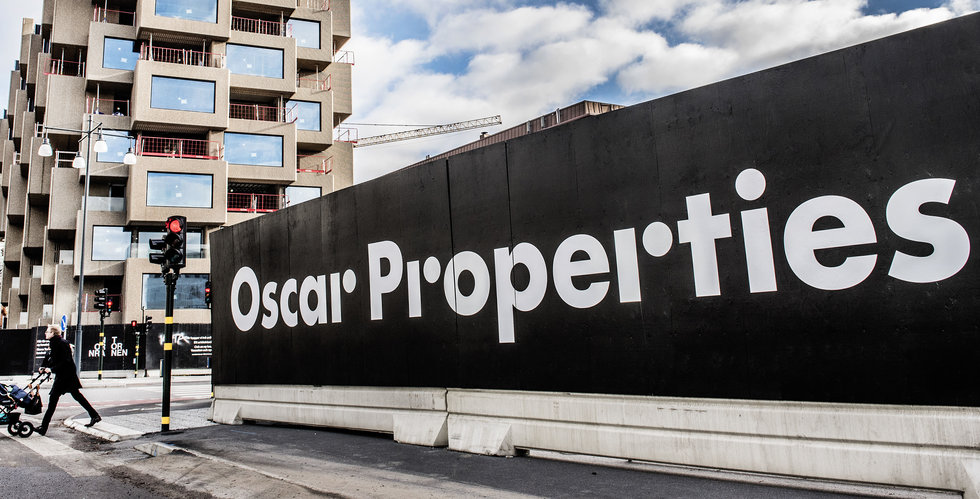
Analyst Note | May 21, 2021
We lower our uncertainty rating to low from medium and increase our fair value estimate for narrow-moat Atlas Copco. We apply a lower systematic risk adjustment to our cost of equity, which declines to 6.7% from 7.6%. Our fair value increase reflects our lower cost of equity adjustment, higher forecasts following recent results, and the time value of money. Combined, these adjustments increase our fair value estimate to SEK 380 per share from SEK 310 per share.
Our near-term revenue forecasts include 2021 revenue growth of 12% from 7% previously, reflecting the strong chip demand driving revenue for the company's vacuum division and general short-cycle equipment recovery supporting growth in compressor and other divisions. We note that across our coverage for capital goods, recent results have shown a greater-than-expected rebound in short-cycle demand. For 2021, we continue to expect an EBIT margin of around 22%.
For the medium term, we forecast 5% average annual revenue growth driven by semiconductor customer demand as well as energy savings initiatives driving compressor demand. Our modest EBIT margin improvement assumption and slightly rising payout ratio forecast, translate into medium-term 6% and 7%, earnings and dividend growth, respectively.
We give Atlas Copco a low uncertainty rating due to the company's leading share in mission-critical equipment for industrial applications, low operating leverage, and high portion of recurring service revenue. The company maintains low operating leverage and cost flexibility by outsourcing 75% of its components, providing stability to company margins and cash flow generation through the economic cycle. Outsourcing also lowers the company's plant reinvestment needs. The company derives 36% of revenue from service revenue, composed of maintenance and spare parts. This revenue is recurring and high margin, which helps to smooth profits and cash flow against short-cycle volatility in equipment demand.
Business Strategy and Outlook | May 21, 2021
Atlas Copco is a market leader with a focused product portfolio of mainly compressors and vacuum pumps. These two product areas contribute around three fourths of revenue and four fifths of profit for the company. Its two smaller divisions, industrial technique and power technique, make up the remaining revenue. The company's equipment is highly engineered, often with customization and application-specific variations. To that point, equipment sales are done by engineers. End markets for the company's compressors are diverse, from automotive assembly to food processing. However, for vacuum pumps, semiconductor chip demand is the key driver. The electronics industry contributes two thirds of vacuum pump division revenue and, as a result, nearly one fifth of revenue for Atlas Copco at the group level.
The economic cycle can cause short-term demand volatility, but the company's flexible cost structure and large portion of service revenue underpin double-digit margin and returns throughout the cycle. Around 75% of its equipment components are outsourced. Maintenance services and spare parts contribute more than one third of group revenue. The company leverages its large service operations and trains its technicians to service competitors’ equipment as well its own. The compressor division brings in the largest portion of service revenue at more than 40% of division revenue.
We believe the company's compressor division is around twice as large as its closest competitor, Ingersoll Rand. Atlas Copco uses this near ubiquity to its advantage by acquiring other equipment and tool portfolios that it can sell to its air compressor base. Higher-volume production capabilities and an installed distribution channel allow the company to globalise the products of its acquired businesses at a lower cost than those operations could achieve by themselves.
Economic Moat | May 21, 2021
Atlas Copco has a narrow moat created by high switching costs and the intangible assets of a high-quality brand with innovative products. Its return on invested capital is consistently in the mid-20s, well above its cost of capital, and the company has managed to stay comfortably above its cost of capital even at low points in the cycle.
As a pioneering company, Atlas Copco possesses a patent-protected deep expertise in air compressors. Its compressor portfolio is geared toward high-end compressors, with less exposure to lower-end basic compressors available, for example, in hardware stores. Through the years, Atlas Copco has developed several important innovations that allow it to charge a premium for its products and defend its leading market share position. The most recent of these innovations is its line of variable speed compressors, which offer 35% energy savings on average versus fixed-rate compressors. This innovation was 10-15 years in the making for Atlas Copco. The cycle for such significant innovations is long, partly because new designs need to be tested and tweaked for various conditions to ensure durability and high performance levels across its customer base. For example, an air compressor will operate differently in a high-altitude environment than in a low-altitude environment. Given the development time for this product, we are confident that it will enable the company to defend its leading market position with a differentiated product and reinforcement of its brand quality for several years to come.
Atlas Copco can charge premium prices for a significant portion of its product portfolio. It has had a 1% average price increase every year since 2009; these increases have been driven by Atlas Copco’s innovations and bundling strategy, which obscure like-for-like price comparisons, and a growing portion of service contracts. Service contracts are important contributors to switching costs for Atlas Copco's customers, as they increase customer stickiness. Through its service contracts, the company can deliver service repairs that minimise equipment downtime. It can also ensure that the equipment is running efficiently through, for example, early detection of leaks that increase the compressor's energy usage and can go undetected without close monitoring. These types of proactive repairs are important because as much as 80% of the lifetime cost of a compressor is from the energy it takes to run it. The company has been successful at selling service contracts, with as much as 50% of its installed base of compressors on service contracts. The key to its success in contract sales is that Atlas Copco has internal and customer-specific studies that show how much money the customer would save by taking an Atlas Copco service contract, as opposed to the customer or a third party servicing the compressors. These cost savings stem from lower energy costs and less downtime.
Downtime can be much more costly than a premium service contract, making customers reluctant to switch out of a service contract that is helping them to run their operations without failures. The company has a high renewal rate on contracts, and even in the mining sector, which is going through severe cost-cutting actions, the company has been able to sell new high-tier maintenance contracts. Therefore, we think the service contract base is strongly positioned and will continue to provide customer stickiness in the future.
Within Atlas Copco's high-end and larger compressors, customers have high switching costs, as these compressors are often customised and are the backbone for powering much of the machinery and equipment in many industrial processes. Customised compressors can be designed with different pathways from which the air will be released, in order to maximise the impact of the expelled air's force on the motor or a particular piece of equipment that the compressor is helping to power. The machines can also be adjusted to work with maximum efficiency under specific conditions, such as extreme temperatures or high altitudes. An air compressor that efficiently exerts force can create substantial savings in electricity costs for the end user. The employees of Atlas Copco's customers receive training to operate the equipment, and a portion of its salesforce consists of qualified engineers, reflecting the complexity of its products. Atlas Copco's own service crew receives training for up to two years before being put in the field to service the company's compressors.
Atlas Copco also offers financing for some of its customers, which a smaller company may not be able to do. In recent years, the company has not reported any significant impairments on loans from customer financing.
A wide moat rating for Atlas Copco would require an assumption that the company can continue generating new differentiating compressor designs that enable it to retain pricing power, market share, and returns above its cost of capital for the next 20 years. We are comfortable with the assumption that this is the case for the next 10 years, but 20 years includes increased risk that the company might lose its competitive advantages, in our view.
In most years, innovations in air compressors consist of fine-tuning of current designs to increase performance. These are not necessarily enough to keep competitors, such as Ingersoll Rand, at bay. The big leaps in innovation--such as oil-free, screw design, or the current variable-speed--happen every few decades. These innovations take more time to copy, and therefore offer good moat protection, but they are also rarer, and there is no guarantee that Atlas Copco will again be the first to the market with one of these over a 20-year period.
The company spends an average amount on research and development. Among its competitors in the various markets of compression, manufacturing tools, and rock excavation, it is difficult to find a peer that mirrors Atlas across all of its businesses. However, a look at the major competitors in different segments shows that Atlas Copco’s R&D spending is in the middle of the pack. In other words, there is no evidence that the company is outspending its peers by a large margin in order to stay well ahead in innovation.
Atlas Copco’s portfolio offering also includes a broader set of lower-tech tools that are useful to sell in a bundle to its customers, but that on a stand-alone basis would not make Atlas stand out from the competition. Examples include paving equipment, hoists and trolleys, and assembly tools.
Fair Value and Profit Drivers | May 21, 2021
We increase our fair value estimate after applying a lower systematic risk adjustment to our cost of equity, which declines to 6.7% from 7.6%. Our fair value estimate increase reflects our lower cost of equity adjustment, higher forecasts following recent results, and the time value of money. Combined, these adjustments increase our fair value estimate to SEK 380 per share from SEK 310.
Our near-term revenue forecasts include 2021 revenue growth of 12% from 7% previously, reflecting the strong chip demand driving revenue for the company's vacuum division and general short-cycle equipment recovery supporting growth in the compressor and other divisions. Across our coverage for capital goods, recent results have shown a greater-than-expected rebound in short-cycle demand. For 2021, we continue to expect an EBIT margin of around 22%.
For the medium term, we forecast 5% average annual revenue growth, driven by semiconductor customer demand as well as energy-saving initiatives driving compressor demand. Our modest EBIT margin improvement assumption and slightly rising payout ratio forecast translate into medium-term 6% and 7% earnings and dividend growth, respectively.
Risk and Uncertainty | May 21, 2021
We give Atlas Copco a low uncertainty rating due to its leading share in mission-critical equipment for industrial applications, low operating leverage, and high portion of recurring service revenue. New equipment revenue is sensitive to the cycle, but the high portion of revenue from service provides a floor on margins and returns. In past downturns, both have remained in the double digits.
Atlas Copco maintains low operating leverage and cost flexibility by outsourcing three fourths of its components, providing stability to company margins and cash flow generation through the economic cycle. Outsourcing also lowers the company's plant reinvestment needs. Its equipment is often customized and has high service attachment rates. The company derives 36% of revenue from service revenue, composed of maintenance and spare parts. This revenue is recurring and high margin, which helps to smooth profits and cash flow against short-cycle volatility in equipment demand.
From an environmental, social, and governance perspective, we see product governance as a low-probability risk but one that could have material impact on the company's reputation. However, we have found few legal claims and no material ones against Atlas Copco's products in the past. Its air compressors are often used in industrial plants and are critical to the power and operations of those plants. If the equipment is not properly maintained or properly grounded for electrical supply, the equipment can fail or even catch fire. Proper maintenance is the responsibility of the customer, however. The company manages its risk of product defect through quality control in its production process and adhering to industry technical standards. On the other side, the company does provide equipment warranties and takes associated future claim provisions. The provisions run through the profit and loss statement and are recognized in cost of sales when the equipment is sold.
Capital Allocation | May 21, 2021
We assign Atlas Copco an Exemplary capital allocation rating. As a regular acquirer of smaller businesses, and occasionally larger ones, in new product areas, the company has been disciplined in its choices. It has maintained high returns on capital in the 20s. Its balance sheet has net debt/EBITDA below 2 times. The company continues to pay shareholders and returns part of its excess cash flow with a regular dividend. It has also taken only one major impairment on acquisitions in the past 25 years, with an impairment on goodwill for a rental business that it bought in the 1990s and then sold in 2002. In its acquisitions, the company targets businesses that are number one or two in their markets and in line with its core product focus.






















